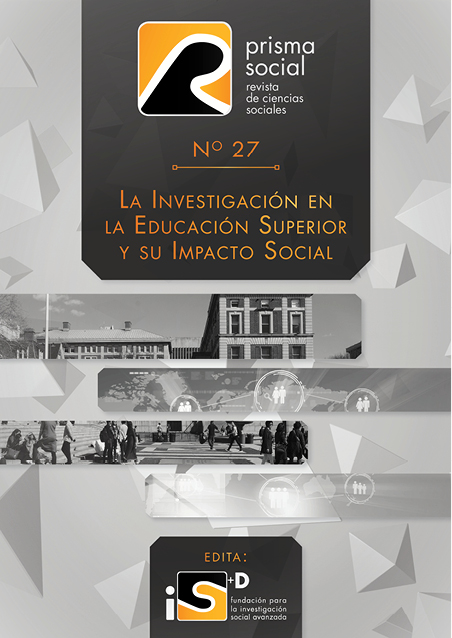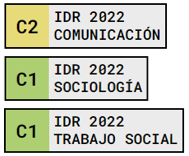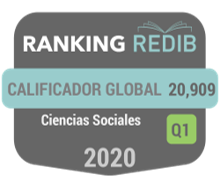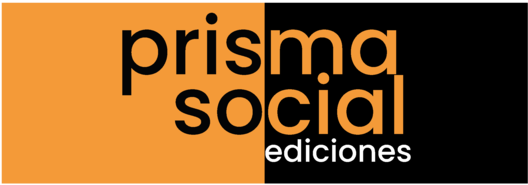Decisions, emergency and value. The discrepancy between what people do and what people think they will do in an emergency
Abstract
Individuals, scientists and organizations have questioned on more than one occasion the degree of rationality underlying human being decisions. It has been observed that, in situations of uncertainty, the aversion to loss imprints an important fragility on the way of deciding. This leads to the question of what will happen when a choice is made in an emergency - will the choice made outside the emergency context coincide with that made in an emergency? This research addresses both situations and analyses differences and similarities between how a decision is made in an emergency and how it is thought to be made in an emergency. In an attempt to answer these questions, a double experiment has been carried out, a staged quasi-analytical simulation (hot state) and a virtual simulation (cold state), the results of which corroborate the existence of discrepancies between the decisions people take and those people think they would take. The results provide new perspectives on the meaning of value, the endowment effect, and the importance that society attaches to the everyday objects.
Downloads
References
Ato, M. (1991). Investigación en Ciencias del Comportamiento I: fundamentos. Barcelona, España: PPU.
Brooke, A.H., y Harrison, N.A. (2016). Neuroimaging and Emotion. En George Fink (Ed.), Stress: Concepts, Cognition, Emotion, and Behavior (pp. 251-259). Melbourne, Australia: Academic Press.
Costa-Sánchez, C., Rodríguez-Vázquez, A. I., y López-García, X. (2015). Medios de comunicación móviles: Potencialidades de las aplicaciones para Smartphone de los medios de comunicación españoles de mayor audiencia. Prisma Social, 15, 387-414.
Engelmann, J. B., Hare, T. A., Fox, A. S., Lapate, R. C., Shackman, A. J., y Davidson, R. J. (2018). Emotions can bias decision-making processes by promoting specific behavioral tendencies. En: Fox, Andrew S.; Lapate, Regina C; Shackman, Alexander J; Davidson, Richard J. (Eds.), The nature of emotion: fundamental questions (pp. 355-359). Nueva York, EEUU: Oxford University Press.
Gigerenzer, G., y Gaissmaier, W. (2015). Decision making: Nonrational theories. En J. D. Wright (Ed.), International encyclopedia of the social & behavioral sciences (2 ed., pp. 911-916). Oxford, United Kingdom: Elsevier. doi: 10.1016/B978-0-08-097086-8.26017-0
Gigerenzer, G. (2001). The adaptive toolbox. En G. Gigerenzer & R. Selten (Eds.), Bounded rationality: The adaptive toolbox (pp. 37-50). Cambridge, MA, EEUU: The MIT Press.
Gigerenzer, G. (2016). Towards a rational theory of heuristics. En R. Frantz & L. Marsh (Eds.), Minds, models, and milieux: Commemorating the centennial of the birth of Herbert Simon (pp. 34–59). Nueva York, EEUU: Palgrave Macmillan.
Hair, J., Anderson, R., Tatham, R., y Black, W. (1999). Análisis multivariante. Madrid, España: Prentice Hall Iberia.
Heilman, R. L., Green, E. P., Reddy, K. S., Moss, A., y Kaplan, B. (2017). Potential impact of risk and loss aversion on the process of accepting kidneys for transplantation. Transplantation, 101(7), 1514-1517.
Kahneman, D., y Tversky, A. (1974). Judgment under Uncertainty: Heuristics and Biases. Science, 185(4157), 1124-1131.
Kahneman, D., y Tversky, A. (1979). Prospect Theory: An Analysis of Decision under Risk. Econometrica, 47(2), 263-291.
Loewenstein, G. (2005). Emotions in Economic Theory and Economic Behavior. American Economic Review, 90(2), 426-32.
Morewedge, C. K., y Giblin, C. E. (2015). Explanations of the endowment effect: an integrative review. Trends in cognitive sciences, 19(6), 339-348.
Porcelli, A. J., y Delgado, M. R. (2017). Stress and decision making: Effects on valuation, learning, and risk-taking. Current opinion in behavioral sciences, 14, 33-39.
Simon, H.A. (1957). Models of Man, Social and Rational: Mathematical Essays on Rational Human Behavior in a Social Setting. Nueva York, EEUU: John Wiley and Sons.
Sokol-Hessner, P., Raio, C. M., Gottesman, S. P., Lackovic, S. F., y Phelps, E. A. (2016). Acute stress does not affect risky monetary decision-making. Neurobiology of stress, 5, 19-25.
Sproten, A. N., Diener, C., Fiebach, C. J., y Schwieren, C. (2018). Decision making and age: Factors influencing decision making under uncertainty. Journal of Behavioral and Experimental Economics, 76, 43-54.
Thaler, R. (2016). Misbehaving: The Making of Behavioral Economics. Nueva York, EEUU: Norton.
Woodruff, R. (1997). Customer value: The next source for competitive advantage. Journal of the Academy of Marketing Science, 25(2), 139-153. doi: 10.1007/BF02894350
Yang, H., Yu, J., Zo, H., y Choi, M. (2016). User acceptance of wearable devices: An extended perspective of perceived value. Telematics and Informatics, 33(2), 256-269.
Yerkes, R.M., y Dodson, J. (1908). The relation of strength of stimulus to rapidity of habit-formation. Journal of Comparative Neurology and Psychology, 18, 459-482.
Downloads
Published
How to Cite
Issue
Section
License
Those authors who publish in this journal accept the following terms:
-
Authors retain copyright.
-
Authors transfer to the journal the right of first publication. The journal also owns the publishing rights.
-
All published contents are governed by an Attribution-NoDerivatives 4.0 International License.
Access the informative version and legal text of the license. By virtue of this, third parties are allowed to use what is published as long as they mention the authorship of the work and the first publication in this journal. If you transform the material, you may not distribute the modified work. -
Authors may make other independent and additional contractual arrangements for non-exclusive distribution of the version of the article published in this journal (e.g., inclusion in an institutional repository or publication in a book) as long as they clearly indicate that the work was first published in this journal.
- Authors are allowed and recommended to publish their work on the Internet (for example on institutional and personal websites), following the publication of, and referencing the journal, as this could lead to constructive exchanges and a more extensive and quick circulation of published works (see The Effect of Open Access).


















